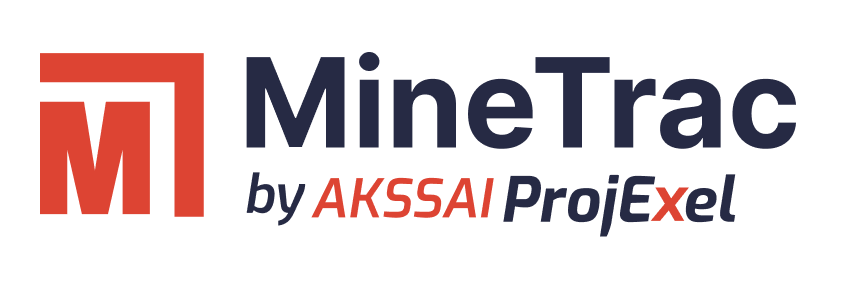
Accounts receivable reconciliation is a critical element in the month-end close process, guaranteeing accurate financial statements.
By aligning internal records with external documents, it swiftly identifies discrepancies, enhances cash flow management, ensures compliance, and offers insights into customer relationships.
This practice’s efficiency extends to strategic decision-making, making it an indispensable factor in maintaining financial integrity and a well-managed business.
What is Accounts Receivable Reconciliation?
Accounts receivable reconciliation is the systematic comparison and adjustment of a company’s internal records with external documents like customer invoices and receipts.
This process ensures the accuracy of accounts receivable balances in the general ledger, playing a crucial role in financial reporting during the month-end close.
Maintaining alignment between customer invoices and the general ledger is essential for presenting an accurate financial picture and avoiding reporting errors.
This alignment is grounded in the principles of double-entry accounting, where every transaction involves two balanced entries, contributing to the reliability of a company’s financial records.
Accounts Receivable Reconciling Items
Accounts receivable reconciling items are discrepancies that occur during the reconciliation process between a company’s records and external documents like invoices and receipts.
High transaction volumes and diverse payment processors pose hurdles in achieving perfect order. Errors in sales recording, misapplied payments, unallocated credits, and delays in transaction posting.
Manual data entry increases the risk of errors and delays in identifying and resolving discrepancies, especially with growing transaction volumes.
When using Automation is crucial for enhancing accuracy and efficiency in managing these reconciling items.
When to Reconcile Accounts Receivables?
Accounts receivable reconciliation is typically performed at the end of every month as part of the month-end close process.
Significance of Month-End Close:
The month-end close process holds significant importance in ensuring accurate financial statements. It involves consolidating financial data, reviewing transactions, and reconciling accounts to produce reliable reports.
Annual vs. Monthly Reconciliation Practices:
Monthly reconciliation practices offer more immediate insights into financial performance, allowing for timely identification and resolution of discrepancies.
However, annual reconciliation practices provide a broader overview of trends and patterns over the fiscal year, aiding in long-term planning and analysis. Combining both monthly and annual reconciliation practices ensures optimal financial control and transparency.
Purpose of Accounts Receivable Reconciliation
Accounts receivable reconciliation serves several crucial purposes, contributing to the financial health and integrity of a business.
Accounts receivable reconciliation serves four key purposes:
- 1. Tax Reporting: Ensures accurate tax reporting, preventing discrepancies and regulatory issues.
- 2. Ensuring Correct Payments: Verifies accurate customer payments, identifying billing errors or discrepancies.
- 3. Maintaining Financial Statements Accuracy: Enhances the accuracy of financial statements for reliable reporting.
- 4. Controlling Theft and Fraud: Acts as a control mechanism to spot and prevent theft or fraudulent activities.
Importance of Accurate Financial Statements: Accurate financial statements are crucial for compliance and decision-making, ensuring legal adherence and providing a reliable foundation for strategic business choices.
Steps of Accounts Receivable Reconciliation
Efficient AR reconciliation involves several key steps:
- 1. Data Collection: Gather necessary data, like accounts payable statements and receivable reports, to set the foundation.
- 2. Data Comparison: Cross-check records meticulously to identify discrepancies between accounts payable and receivable data.
- 3. Investigation: Dig into discrepancies, trace root causes, and make necessary adjustments for accurate alignment.
- 4. Reporting: Communicate results by notifying customers of outstanding amounts or generating updated financial statements, fostering transparency and efficient issue resolution.
How can Automation Streamline the Accounts Receivable Reconciliation Process?
- 1. Reducing Payment Excuses:
Automated invoicing minimizes disputes, ensuring timely payments and fostering strong client relationships.
- 2. Data Centralization:
Finance automation connects and centralizes data, enhancing accessibility for informed decision-making.
- 3. Increased Accuracy:
Automation eliminates human errors, ensuring precise financial processes and reliable data.
- 4. Tracking Customer Behavior:
Automation identifies late-paying or default-prone customers, optimizing credit control and minimizing risks.
- 5. Boosting Productivity:
Time saved through automation boosts overall productivity, allowing focus on strategic tasks.
- 6. Preventing Key Person Dependency:
Standardizing processes with automation ensures workflow continuity during team absences.
- 7. Improving Compliance:
Automation provides detailed audit trails and secure data storage, ensuring regulatory compliance and transparent financial practices.
Industry Examples of AR Reconciliation
- 1. Insurance Industry:
In the insurance sector, accounts receivable reconciliation ensures accurate premium collections, timely policy renewals, and proper management of claims and reimbursements.
- 2. Insurance Broker:
Insurance brokers utilize accounts receivable reconciliation to track commissions, manage client payments, and ensure accurate financial records within the brokerage business model.
- 3. E-commerce Industry:
E-commerce businesses employ accounts receivable reconciliation to manage online transactions, track customer payments, and optimize revenue streams.
- 4. Logistics Industry:
Accounts receivable reconciliation in logistics helps manage billing accuracy, track client payments, and ensure proper invoicing for freight and transportation services.
- 5. Healthcare Industry:
In healthcare, accounts receivable reconciliation is crucial for managing patient billing, insurance claims, and reimbursement processes, ensuring financial stability for healthcare providers.
- 6. Retail Industry:
Retail businesses utilize AR reconciliation to manage customer transactions, track receivables, and optimize cash flow within the retail supply chain.
- 7. Construction Industry:
The construction sector relies on accounts receivable reconciliation to track project billing, manage subcontractor payments, and ensure accurate financial reporting for construction projects.
- 8. Financial Services Industry:
Financial service providers use AR reconciliation to manage client accounts, track loan repayments, and ensure compliance with regulatory financial reporting standards.
- 9. Manufacturing Industry:
In manufacturing, accounts receivable reconciliation helps manage customer orders, track payments, and ensure accurate financial records within the production and distribution processes.
- 10. Divined Receivable:
While “Divined Receivable” seems to be a specific term, if referring to “Deferred Receivable,” it would involve reconciling deferred revenue, typical in subscription-based businesses, ensuring accurate recognition and reporting of revenue over time.
Each industry example highlights the diverse applications of accounts receivable reconciliation, emphasizing its importance in maintaining financial accuracy and stability across various business sectors.
Conclusion
In short, keeping track of accounts receivable is crucial for businesses of all kinds. It’s like making sure the numbers in your books match the paperwork from outside sources. This not only keeps financial statements in check but also helps follow the rules and make smart business choices.
Now, with the help of automation tools like Finac, things are changing in the finance world. These tools do repetitive tasks super-fast, cut down on mistakes, and give finance teams more time for important stuff. It’s not just about making things run smoother – it lets finance experts focus on big-picture tasks, bringing innovation and success to the whole organization. So, embracing tech in accounts receivable isn’t just a convenience – it’s a smart move for a more agile, accurate, and forward-thinking financial future.








